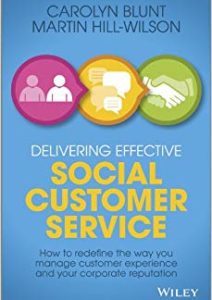Call me slow off the mark but I’ve never jumped into the customer experience pond. For some reason I’ve not been tempted to dive bomb it and announce I’ve arrived. Instead my instinct has been to sit on the sidelines and watch its progress. Recently I’m beginning to understand why…
It’s all to do with that old chestnut of whose priorities are really being served.
Adrian Swinscoe brought it back into focus for me with a recent post Customer experience vs. the customer’s experience: Is there a difference? Having recently chaired some conference sessions and an executive roundtable his own suspicions were raised.
Often when professionals and executives talk about customer experience, I find that the actual customer gets lost and customer experience becomes another functional specialism, where the customer is somehow disembodied.
Even Colin Shaw, who has a self-identified history in birthing the customer experience market, wrote a piece early in the year lamenting the popularization of customer experience and thus its potential decline: 7 Signs Of Decline In the CX Movement In 2015.
My own examples follow a similar vein.
I shared the stage this year with a well-seasoned presenter who enthused about “experience design.” Not a concept I’m against in principle. Disney shows what’s possible in this respect. But used in a half understood manner, it just came over as crude manipulation.
I also recently reviewed the output of a well-known service design consultancy whose team had produced a set of customer journeys for a client I’m working with. Again, I’m not against customer journeys. In fact I’m an enthusiast and promote their benefits. But what they had produced was deeply underwhelming. Neither the format nor supposed insight into the customer priority at each “moment of truth” justified the time and expense. The client was left wondering what they could actually use it for.
Please note: I’m not dismissing the toolkits or concepts, just the lack of skill in their application. It strikes me that a common theme in all this lies in our orientation or mindset. The habit of thinking “inside-out” is so deeply ingrained we are not even aware of its impact. We might think we are on the customers’ side whenever we use cx language. But more often it’s the corporate priorities that shine through, although the wrapper now looks and smells like the real deal.
This might be to do with the fact that some organizations making their mark in the customer experience market have strong marketing and design backgrounds. There is nothing wrong with this, of course. However, both disciplines are traditionally employed to make things look their best. If that instinct dominates, then “experience by design”can simply begin and end with the creative imagination of the team with little input from actual customers.
In my world, customer experience is the result of service quality, or the lack of it. Customer reaction is what’s real. If it falls short then it needs fixing. Same logic applies across the customer lifecycle.
This baseline needs to be fully appreciated before any talk about a “target customer experience” (which seems to trip off the tongue all too easily once customer personas are conjured up through high resolution stock images and aggregated back stories). We are in danger of falling for our own storytelling.
Surely customer experience is what customers are actually thinking and feeling? Not what we like to imagine.
Of course, it is possible to reframe the way a person experiences an event and even evoke what is triggered. That’s why advertising works. But have we thought enough about how this applies to customer engagement? I’d argue there is increasing evidence that starting with the ideal before the reality is a path that easily leads to self deception.
Of course those with a service design will immediately counter by saying that customer research is always the first port of call. Go see the customer in their native habitat: the so called ethnographic approach. Again I have no issue, bar its practicality.
In one recent example I was almost involved with (before the assignment was canned) the client became too impatient and set off before any actionable insights arrived from this form of qualitative research. The question I’d ask is: would diving into the complaints logs have unearthed a richer and more immediately useful source of insight?
Admittedly all this could look like arranging symptoms to find a pattern. But as the lead character in TV crime series tend to say: “I don’t believe in coincidences.”
So why am I writing this?
I want to lend my support to a fledgling industry that I see as a close relative to the one I’m involved with – in fact one that shares many of the same challenges. Well-known and well-informed blogger Gregory Yankelovich recently penned a post called Why is it so difficult to get funding for Customer Experience change?
Gregory’s answers will not come as a surprise. Senior attention remains inadequate beyond agreeing that cx is a “good thing.” The locked-in world they inhabit does not encourage many of them to join the dots and recognize that better customer experience and the eternal challenge of “increased revenue at reduced costs” are intimately connected.
This is why we must not squander opportunities and make sure we deliver practical strategy and toolkits that help customers first so that organizations actually benefit.
Photo credit: Peter












